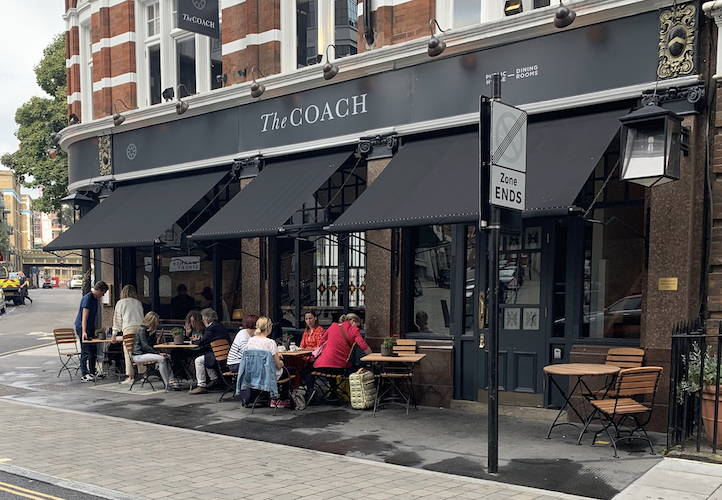The Coach at the bottom end of Ray Street, off Farringdon Road, is a delightful gastropub. It is a great improvement on its predecessor, the Coach and Horses, which once served employees of the Guardian when the newspaper occupied a nearby building. Yet Coach and Horses itself was a huge improvement on what used to be there.
In the late 17th and 18th century, the spot was known as Hockley-in-the-Hole, the site of a notorious bear and dog baiting arena, which also featured bare knuckle fights. What took place there is well described by an advert for events of 27 April 27, 1700, described as “being a general day of sport by all the old gamesters and a great mad bull to be turned loose in the game place with fireworks all over him and two or three cats tied to his tail and dogs after them”.
It was regarded as the lowest of low entertainment, yet attracted an unusual mixture of high and low life, including Alexander Pope and Jonathan Swift, author of Gulliver’s Travels. John Gay, also a customer, mentions it in The Beggar’s Opera, when Mrs Peachum says to Filch: “You must go to Hockley-in-the-Hole and Marylebone, child, to learn valour”.
In Oliver Twist, Charles Dickens has the Artful Dodger, after a pickpocketing foray, moving “across the classic ground which once bore the name of Hockley-in-the-Hole; then into Little Saffron Hill; and so into Saffron Hill the Great, along which the Dodger scudded at a rapid pace, directing Oliver to follow close at his heels”.
All the evidence of bear baiting and the like has long since gone, yet the Fleet River, which used to flow near to it, has not gone away. It is merely covered up. If you check there is no traffic coming, step a yard or two into the road outside The Coach and put your ear near the drain, you can hear the flow of the Fleet at the point before it joins the main sewer en route to Farringdon Road and the Thames.
Vic Keegan’s latest book of poems, Selective Memories, has just been published and can be bought here. All previous instalments of his brilliant Lost London series are archived here.
OnLondon.co.uk is dedicated to providing fair, thorough, anti-populist coverage of London’s politics, development and culture. It depends on donations from readers and would like to pay its freelance contributors better. Can you spare £5 (or more) a month? Follow this link to donate. Thank you.


As always, nice one!
There is more contemporary fictionalising of Hockley-in-the Hole in Neal Stephenson’s Baroque Cycle. The main character, Daniel Waterhouse, returns to London to create ‘a sort of annex to the [Massachusetts Bay] Institute of Technologickal Arts’:
“A bloke wanting to leave the urban confines of Clerkenwell Green and venture out across the fields toward Black Mary’s Hole would have to contend with a few obstacles. For directly in his path stood the ancient compound of St. James’s, and on the far side of that was a new-built prison, and just beyond that, a bridewell run by Quakers. And the sort of bloke who passed the time of day going up to Black Mary’s Hole would instinctively avoid such establishments. So he would begin his journey by dodging westwards and exiting Clerkenwell Green through a sort of sphincter that led into Turnmill Street. To the left, or London-wards, Turnmill led into the livestock markets of Smithfield, and was lined with shambles, tallow-chandleries, and knackers’ yards: hardly a tempting place for a stroll. To the right, or leading out to open country, it forked into two ways: on the right, Rag Street, and on the left, Hockley-in-the-Hole, which presumably got its name from the fact that it had come into being along a bend of the Fleet, which there had been bridged in so many places that it was vanishing from human ken.
Hockley-in-the-Hole was a sort of recreational annex to the meat markets. If animals were done to death for profit in the butcher-stalls of Smithfield, they were baited, fought, and torn asunder for pleasure in the cock-pits and bear-rings of Hockley-in-the-Hole.”
Ss for Black Mary’s Hole, that was dealt with by the Dabbler, http://thedabbler.co.uk/2011/11/the-slang-guide-to-london-black-marys-hole/
[…] the notorious Hockley-in-the-Hole bear baiting pit, which stood on the site of today’s gastropub The Coach (where you can hear the subterranean flow of the Fleet from a drain outside the front door). He ran out of money and asked the landlord of the Castle Inn […]